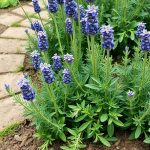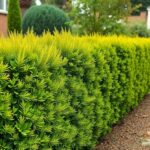If you’re tired of deer munching on your garden favorites, you’re in luck! Here’s a list of 11 deer-resistant plants that can thrive in your landscape without becoming a buffet for these curious critters. Let’s dive in and discover some robust options that can add beauty to your garden while keeping the deer at bay.
Lavender: A Fragrant Barrier
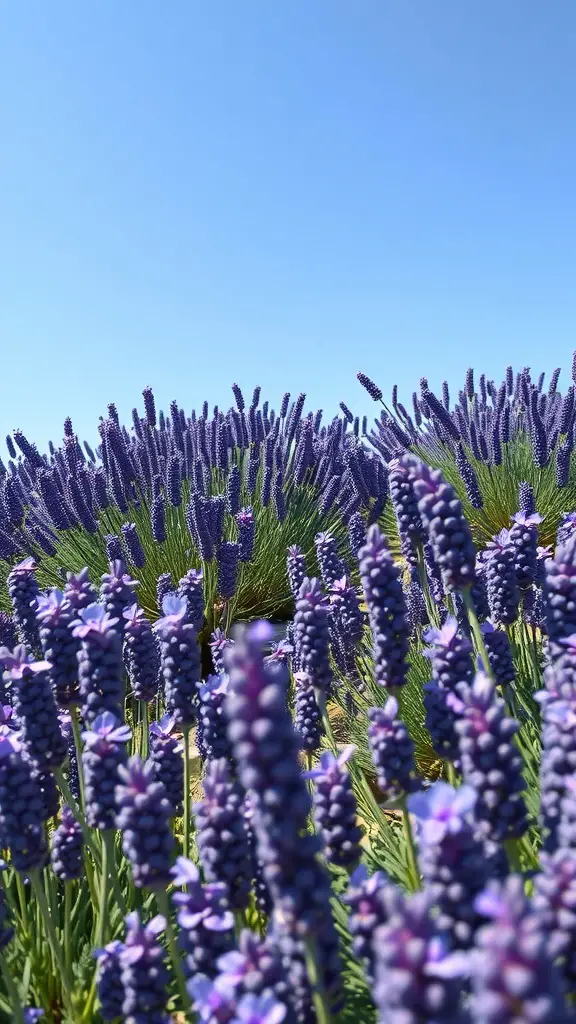
Lavender stands out as a vibrant and fragrant addition to any garden. Its rich purple flowers are not just pleasing to the eye; they also serve as an effective deterrent for deer. The strong scent of lavender is often unappealing to these herbivorous animals, making it a popular choice for gardeners seeking to protect their plants.
In the image, you can see a lush field of lavender, with tall spikes of flowers stretching towards a clear blue sky. This stunning display highlights the natural beauty of lavender while illustrating how it can create a fragrant barrier that keeps unwanted visitors at bay.
Aside from its role in deer resistance, lavender is also versatile. You can use it in culinary dishes, crafts, and even aromatherapy. Imagine the scent of dried lavender in your home or the taste of lavender-infused lemonade on a hot summer day. With its many uses and benefits, lavender proves to be a delightful addition to any garden.
Sage: Aromatic and Robust
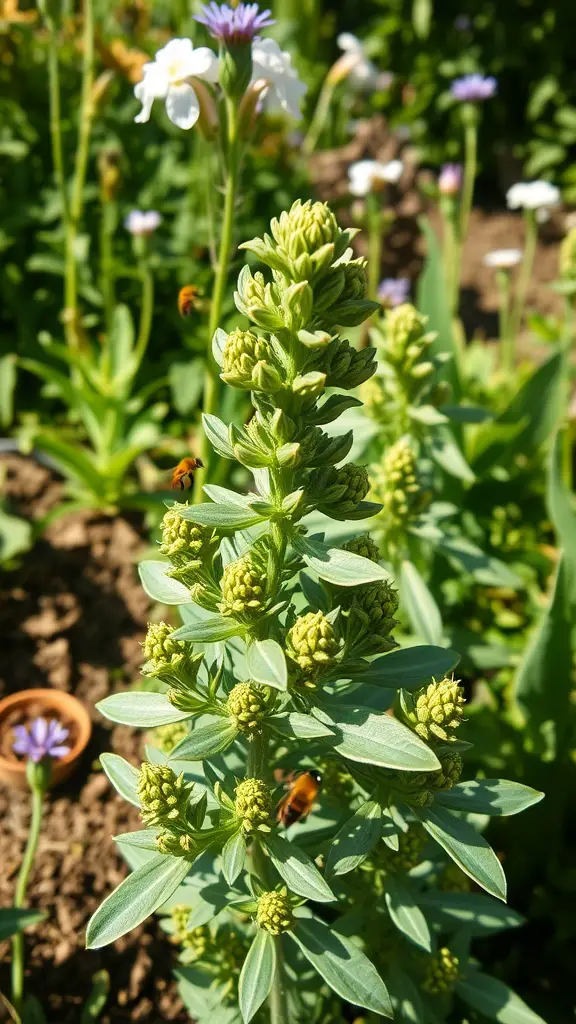
Sage is not just a culinary delight; it’s also a fantastic addition to any garden. With its sturdy green leaves and unique flower buds, sage can bring both flavor and beauty to your outdoor space. In the image, you can see the vibrant green foliage and budding flowers that make sage so appealing.
This herb grows well in well-drained soil and prefers sunny spots, making it a low-maintenance choice for gardeners. Its strong aroma often deters deer, helping to keep your garden safe from these hungry visitors. Plus, sage attracts beneficial insects like bees, which are essential for pollination.
When planted alongside other deer-resistant plants, sage enhances the overall aesthetic of your garden while providing a robust flavor to your dishes. Whether you’re using it in a savory recipe or simply enjoying its presence in your garden, sage is a reliable choice for those looking to keep deer at bay.
Ferns: Lush Greenery for Shade
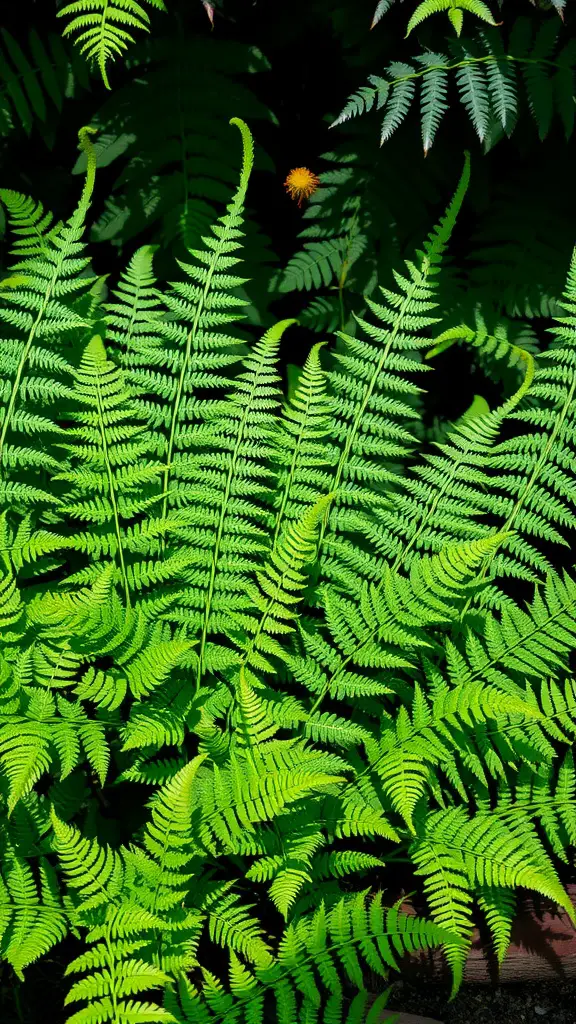
Ferns are a fantastic option for those looking to add lush greenery to shady areas of their gardens. These plants thrive in low-light conditions and bring a soft, feathery texture that contrasts beautifully with other plants.
The image showcases vibrant green ferns, their delicate fronds gracefully arching and reaching towards the sky. This rich green hue not only brightens up darker corners but also creates a serene atmosphere. Ferns are particularly appealing as they are deer resistant, making them a smart choice for gardens in areas where these animals roam.
There are various types of ferns, each with its unique shape and size. Whether you prefer the classic lady fern or the intricate Japanese painted fern, there’s something for every garden style. Planting ferns in clusters can enhance their visual impact, creating a lush, woodland feel.
When caring for ferns, ensure they have adequate moisture and well-drained soil. They are relatively low-maintenance, making them perfect for both seasoned gardeners and beginners alike. So, if you’re looking to enrich your shade garden, consider adding some lovely ferns!
Lantana: Colorful and Resilient
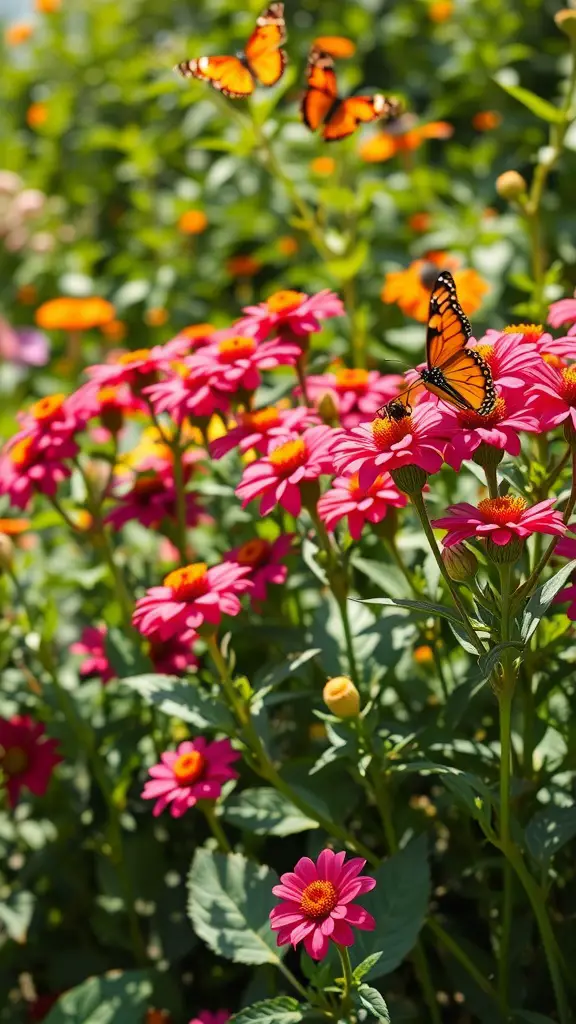
Lantana is a delightful addition to any garden, known for its bright, cheerful colors. The image shows vibrant pink flowers surrounded by lush green leaves, creating a lively atmosphere. Butterflies are drawn to these blooms, making your garden not just beautiful but also a hub for wildlife.
This plant is a fantastic choice for those looking to deter deer. Its strong scent and taste are unappealing to these animals. Plus, it thrives in various conditions, making it a low-maintenance option for gardeners.
One of the best features of lantana is its ability to bloom from spring through fall. You’ll enjoy a continuous display of color that can brighten any outdoor space. Pairing it with other drought-tolerant plants can create a stunning landscape while conserving water.
Incorporating lantana into your garden can also attract beneficial pollinators. This not only adds beauty but helps support local ecosystems. Whether you plant it in containers or as part of a larger garden bed, lantana is sure to enhance your outdoor space.
Daffodils: Colorful and Toxic to Deer
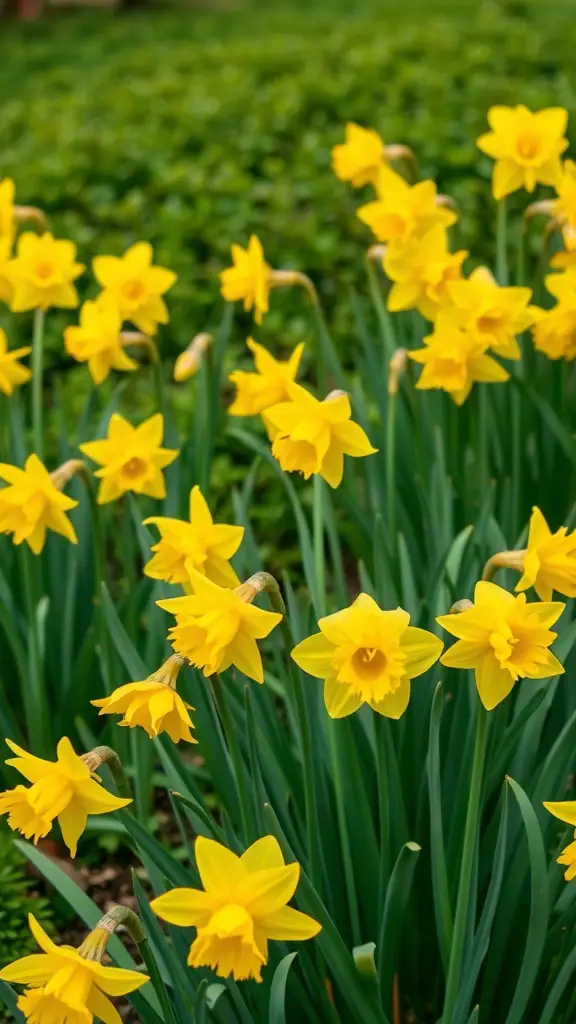
Daffodils are a cheerful addition to any garden. Their bright yellow blooms bring a splash of color that signals the arrival of spring. When you see clusters of these flowers, they are hard to miss.
One thing that makes daffodils special is their natural resistance to deer. While many plants fall victim to hungry deer, daffodils are toxic to them. This means that you can enjoy their beauty without worrying about deer munching on them.
Their toxicity comes from compounds found in the bulbs, leaves, and flowers. This keeps deer and other herbivores at bay, making them a smart choice for gardeners looking to protect their plants.
Plus, these flowers are quite easy to grow. They thrive in various garden conditions, preferring well-drained soil and sunny spots. So, not only do they add color, but they also offer a practical solution for those facing deer challenges in their yards.
Marigolds: Bright Blooms that Deter
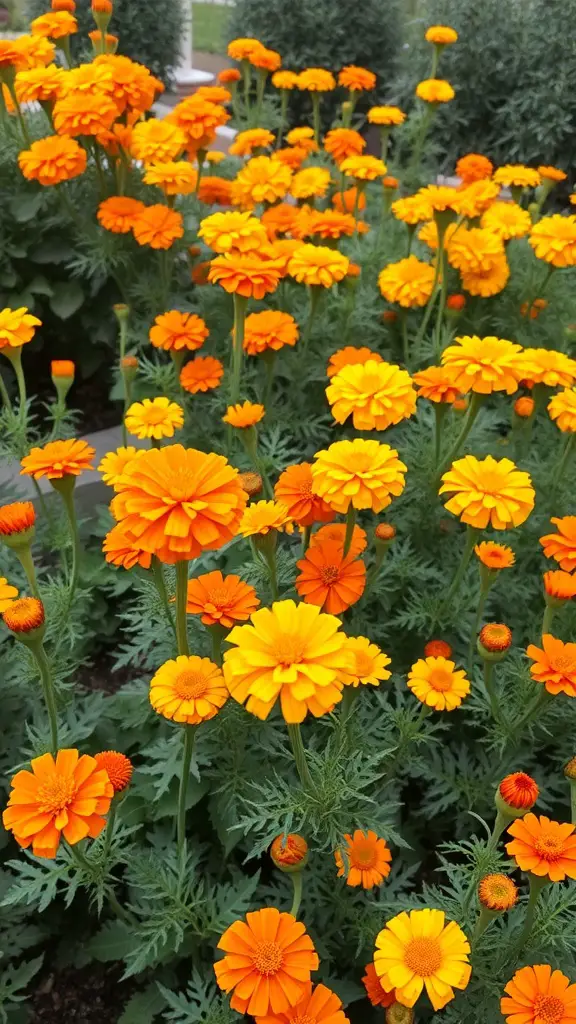
Marigolds are not just charming additions to your garden; they also serve a practical purpose. These cheerful flowers come in vibrant shades of orange and yellow, instantly brightening up any outdoor space. The image captures a lush display of marigolds, showcasing their full blooms and rich green foliage.
One of the key benefits of planting marigolds is their ability to deter deer. The strong scent of these flowers is unappealing to many garden pests, including our four-legged friends. By incorporating marigolds into your landscape, you can create a colorful barrier that helps protect your more vulnerable plants.
Besides their pest-repelling abilities, marigolds are relatively low-maintenance. They thrive in sunny spots and can handle a variety of soil types. Plus, they bloom from spring until frost, providing a long season of color. Whether you plant them in beds, borders, or containers, marigolds are sure to add a cheerful touch to your garden.
Yucca: Striking Architectural Plant
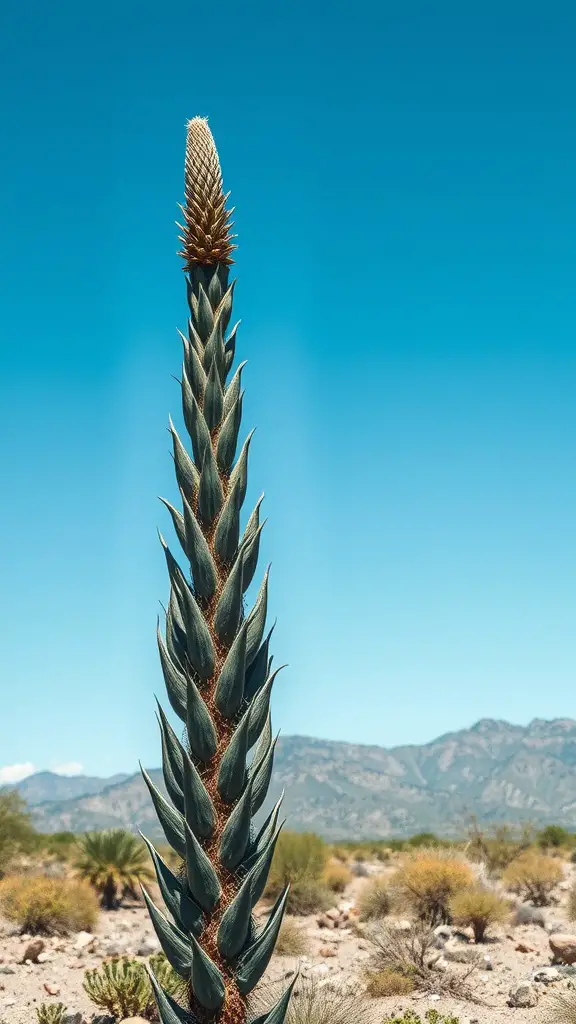
Yucca plants are a sight to behold, standing tall with a unique and upright structure. Their long, pointed leaves create a striking silhouette, making them a fantastic choice for gardens and landscapes. In the image, you can see a yucca blooming, showcasing a tall flower spike that adds even more visual interest.
This plant thrives in dry, sunny areas, making it perfect for regions where deer roam. Deer typically avoid yuccas due to their tough leaves and spiky edges, allowing your garden to flourish without being nibbled on. Planted in clusters or as standalone specimens, yuccas can add a dramatic touch to your outdoor space.
Additionally, yuccas are low-maintenance and drought-tolerant, which is a bonus for busy gardeners. They require minimal watering once established and can adapt to various soil types. This resilience makes them ideal for xeriscaping, where water conservation is key. So, if you want to enhance your garden while keeping deer at bay, yuccas are a solid choice.
Thyme: Culinary Delight and Defense
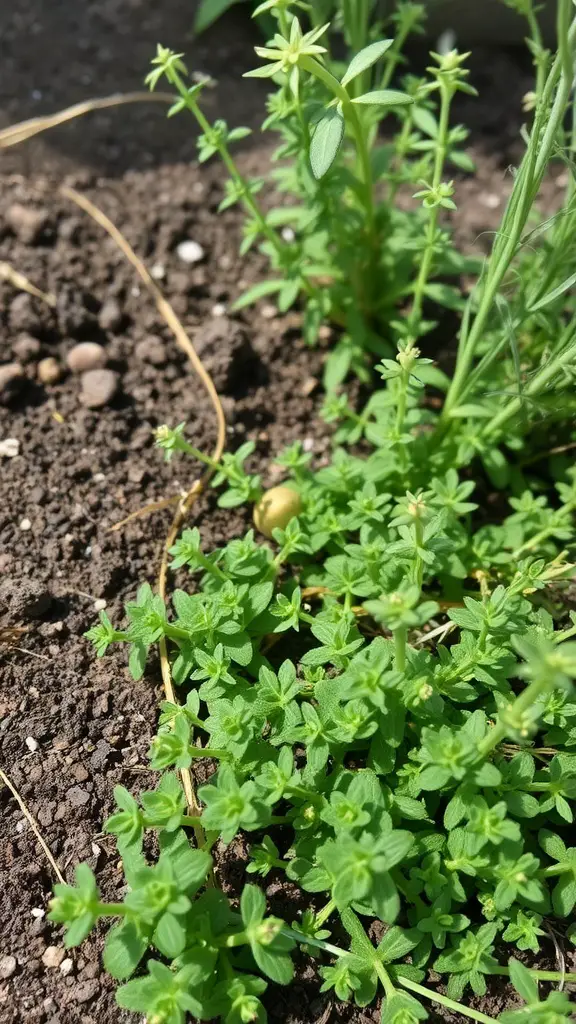
Thyme is not just a staple in the kitchen; it’s also a reliable choice for your garden if you’re looking to keep deer at bay. The vibrant green leaves in the image showcase this herb’s lush growth. Its strong scent is often unappealing to deer, making it a wise addition for those dealing with these curious grazers.
In addition to being a deer deterrent, thyme adds flavor to many dishes. It pairs well with meats, vegetables, and even in marinades. Imagine sprinkling fresh thyme over roasted chicken or tossing it into a vegetable stir-fry. The possibilities are endless!
Growing thyme is simple. It thrives in well-drained soil and sunny spots, and it doesn’t require much water. Just a little care, and you’ll have a beautiful herb that’s useful in the kitchen and helps protect your other plants.
So if you’re looking to spruce up your garden while keeping it deer-resistant, consider planting thyme. It’s a small step that offers big benefits for both your cooking and your landscape.
Boxwood: Elegant and Versatile
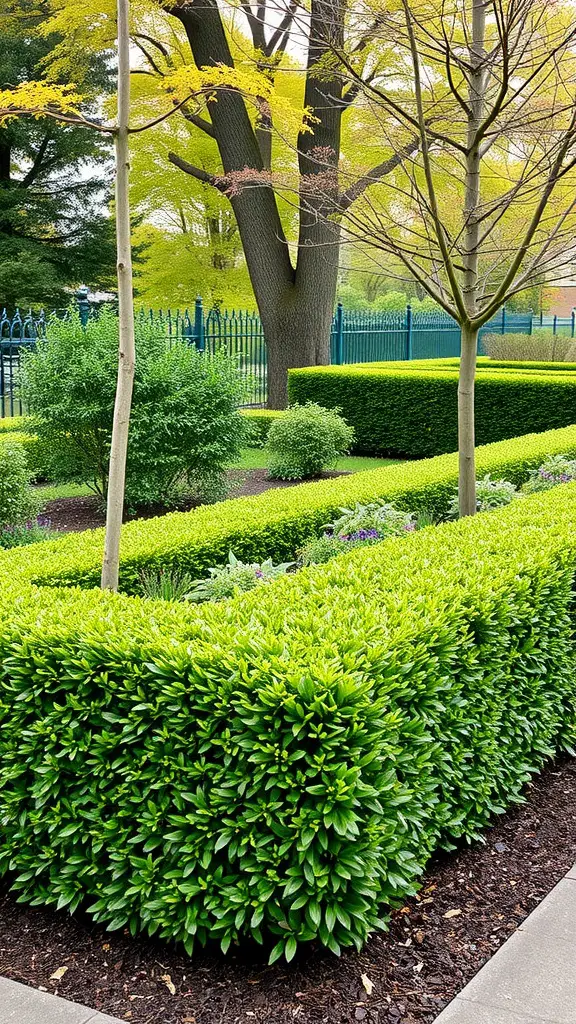
Boxwood is a classic choice for gardens, and it’s easy to see why. The lush green foliage creates a beautiful backdrop for any landscape. In the image, you can spot neatly trimmed boxwood hedges that add structure and definition to the garden. The vibrant green color brightens up the area, making it inviting and pleasant.
These plants are not just easy on the eyes; they are also deer resistant. This means you can enjoy your garden without worrying about deer munching on your favorite plants. Boxwood can thrive in various conditions, making it a versatile option for different spaces.
Besides being visually appealing, boxwood is perfect for creating borders or hedges. The way they can be shaped and maintained adds elegance to any outdoor setting. Whether you have a formal garden or a relaxed landscape, boxwood fits right in. It’s a reliable choice that adds charm without the fuss.
Butterfly Bush: A Pollinator Magnet
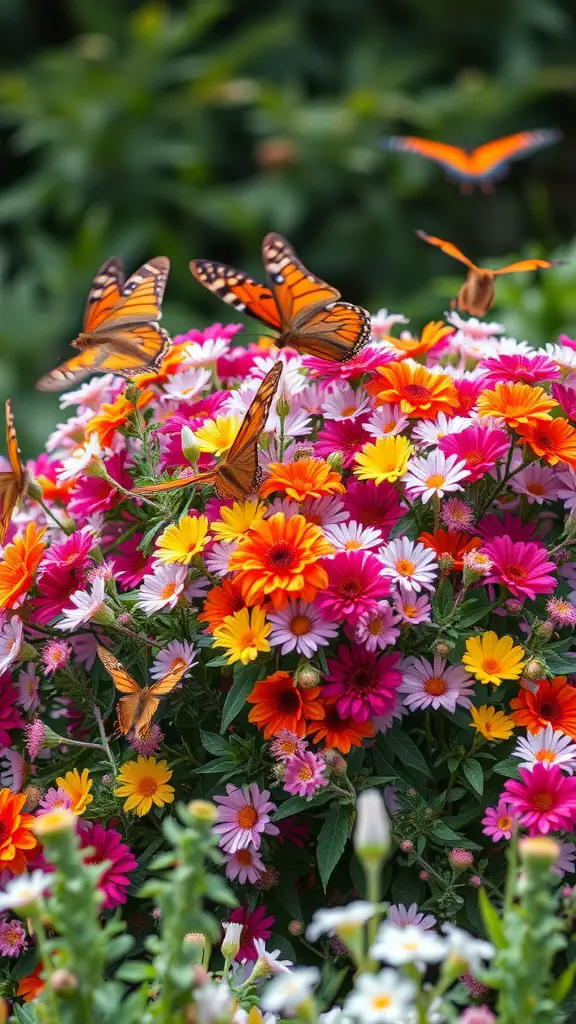
Butterfly bushes, with their vibrant blooms, are a delight for both the eyes and the ecosystem. In the image, you can see a rich tapestry of colors, where butterflies dance joyfully among the flowers. This lively scene captures the essence of a garden thriving with life.
These plants are not just visually appealing; they attract a variety of pollinators, making them a wonderful addition to any garden. The bright oranges and yellows in the image show how inviting these flowers can be to butterflies. If you want to create a haven for these beautiful creatures, planting butterfly bushes is a step in the right direction.
One of the best parts about butterfly bushes is their resilience. They are often deer resistant, meaning you can enjoy their beauty without worrying about unwanted nibblers in your garden. So, why not add a splash of color to your outdoor space while supporting local wildlife?
Russian Sage: Silvery Foliage and Resilience
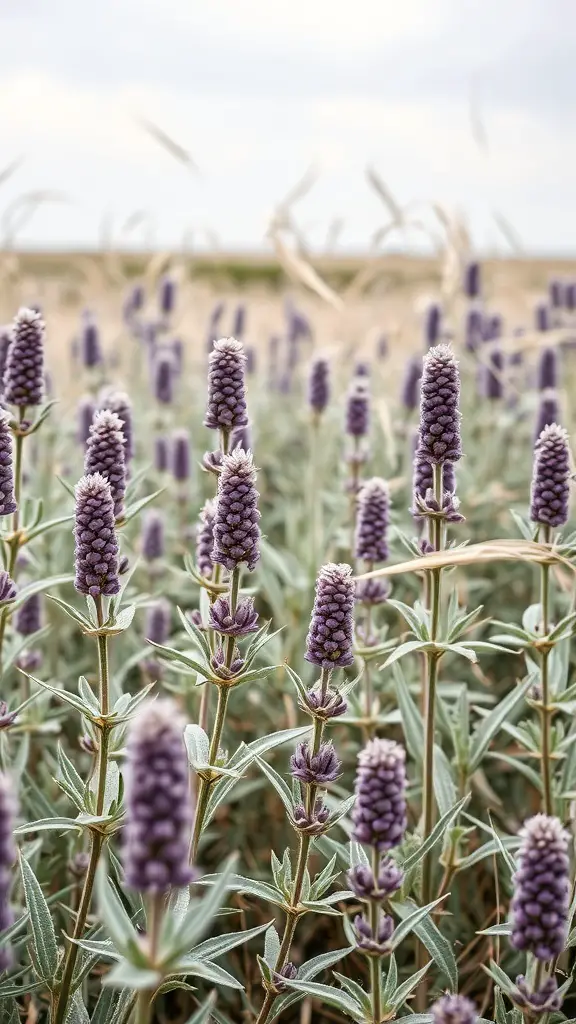
Russian Sage, with its striking purple flower spikes, adds a lovely touch to any garden. The soft, silvery foliage provides a beautiful contrast that stands out beautifully in the landscape. Its tall stems create an airy feel, making it an attractive choice for borders or as a focal point in your garden.
One of the best things about Russian Sage is its ability to thrive in tough conditions. It doesn’t require much water and can handle drought well, making it perfect for low-maintenance gardens. This plant is also known for being deer resistant, which is a big plus for anyone who struggles with these hungry visitors.
With a growing height of about two to four feet, Russian Sage can fill in spaces while still allowing light to reach other plants. It blooms in late summer, bringing a splash of color when many other plants are winding down. Plus, its aromatic foliage can deter pests, adding another layer of benefit.
